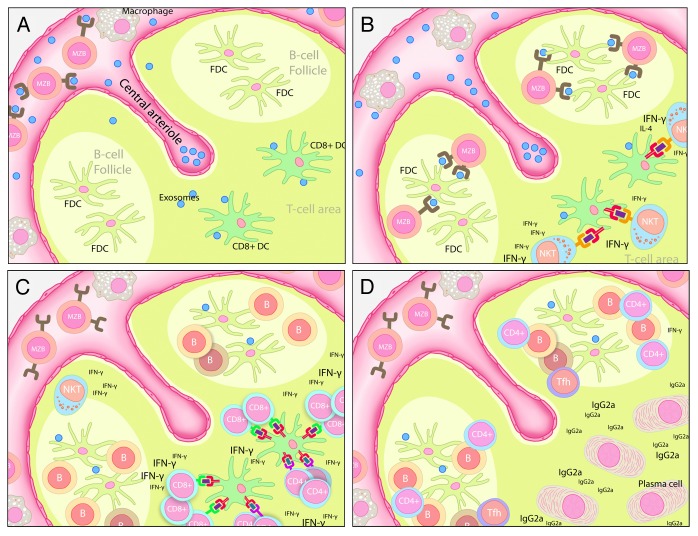Figure 1. Possible mechanisms for the sequential activation of immune cells by exosomes. (A) Exosomes loaded with α-galactosylceramide (αGC) and tumor-associated antigens are injected intravenously and taken up by splenic marginal zone B cells (MZBs) in the B cell zone and dendritic cells (DCs), which migrate into the T-cell zone. (B) MZBs deposit antigen on follicular DCs (FDCs) in the splenic B-cell zone, while DCs mediate lipid antigen presentation to iNKT cells in the T-cell zone (C) CD8+ DCs become cross-licensed to efficiently present peptide antigens to CD4+ and CD8+ T cells, while antigen-specific B cells become activated upon interaction with antigen-presenting FDCs. (D) Activated CD4+ T cells home to the B-cell/T-cell border and assist B-cell activation, thus favoring isotype switching and the production of antigen-specific antibodies.

An official website of the United States government
Here's how you know
Official websites use .gov
A
.gov website belongs to an official
government organization in the United States.
Secure .gov websites use HTTPS
A lock (
) or https:// means you've safely
connected to the .gov website. Share sensitive
information only on official, secure websites.
